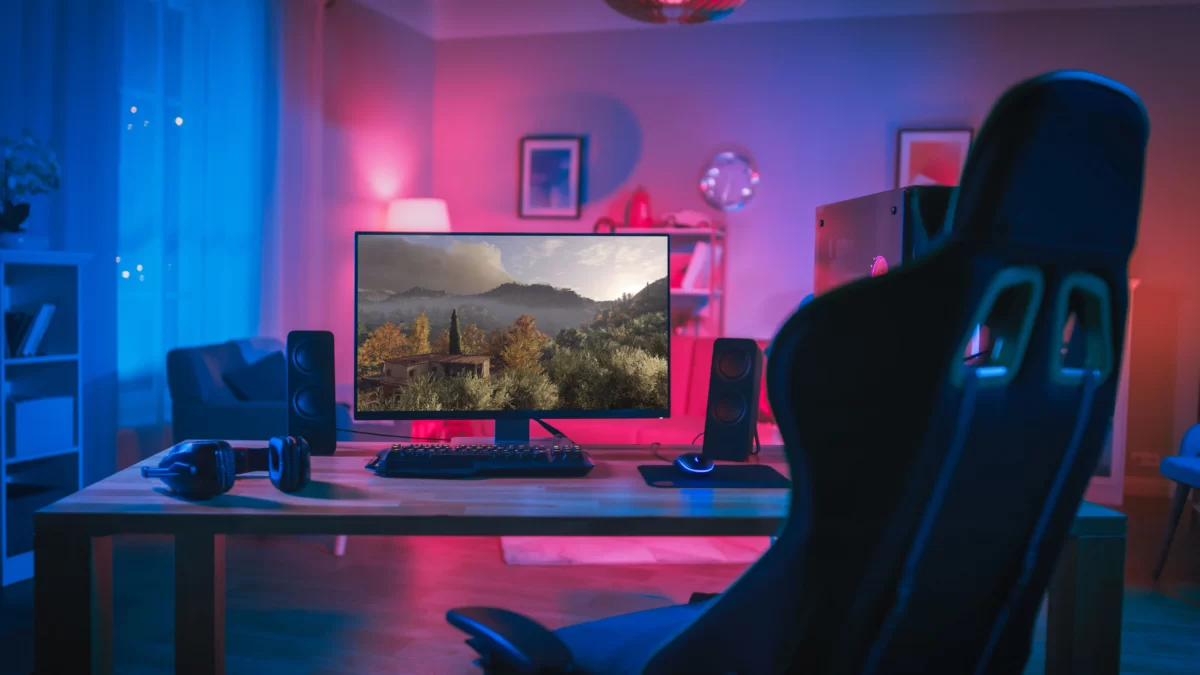Gaming monitors are amazing for serious gamers. But how to choose the right one is a big question. Your system will seem lackluster without the right display size and resolution. The comical thing is even with the best CPU and graphic card; a gaming computer cannot demonstrate its full glory without a tangible gaming monitor.
What to look for in a gaming monitor?
Display shelves are packed with multiple options and myriad spaces. Should you get 4K or just plain HD resolution? Is HDR or 27-28 inches monitor perfect?
Let us guide you through the features required for the right gaming monitor.
Determine Your Intent
Before choosing a 4k monitor gaming, determine your main intents whether you require a monitor for gaming or professional or general use. As a gamer, you must give priority to Fast Refresh Rates, Short Response Times, Big Size Screen, Color Accuracy, Higher Resolution, and so on. There is no doubt that users have less specific requirements but will oftentimes opt for a monitor with a high-contrast VA panel.
Resolution
The next point is the resolution of the monitor. Higher the resolution, better the picture. The resolution of a monitor lets you know the total number of pixels a monitor has in width x height format.
If you’re a relatively serious gamer, your primary decision could be around 1080p vs. 1440p gaming. 1080p is superb, no doubt. However, 1440p gaming paves the way for some amazing and unique resolutions like 4K. What more? 8K is the undisputed king of gaming resolution, especially for those willing to get technical about it.
Response Times
Response time for monitors refers to the time your monitor takes for shifting from one color to another. It tells how long your monitor takes to change individual pixels from black to white in milliseconds (ms) or, if it’s GTG response time, from one shade of gray to another.
In case of a gaming monitor, a short response time is always more promising. Longer response times mean blur motion when gaming. 5ms is the highest response time you would like to see in gaming monitors while the fastest gaming monitors can have a 0.5ms response time.
Panel Tech
- VA (Vertical Alignments) has slower response times than TNs and the newer Nano IPS panels with their one-millisecond response rates. These monitors have the best contrast out of all three-panel types.
- TN, or Twisted Nematic panels, is the oldest variety of display panels. They might have low contrast, weaker images, and limited viewing angles. Nevertheless, they are still common.
- In-Plane Switching (IPS) monitors leverage liquid crystals aligned in parallel to produce rich colors. If you want more crisp and detailed images while gaming, then an IPS can be the ideal panel for you. It gives a faster response time and shows the color better than VA panels.
Screen Size
The size of monitors matters a lot. The density of pixels has a powerful impact on the monitor and the best spot is 109 pixels per inch (PPI). If the resolution is low, a large monitor will come with a low pixel density. For an ideal solution for a gaming monitor, go for a size between 27-28 inches. More than this can be plenty big.
Refresh Rates
The refresh rate of a monitor’s display refers to how many times per second the display can draw a new image. This is measured in Hertz (Hz). To take an example, if your display has a refresh rate of 144Hz, it means it can refresh the image 144 times per second.
For gaming, bigger is preferable. A bigger number means smoother and less choppy images. For those gamers who want a monitor with a minimum of 75 Hz (most monitors for gaming offer at least 120 Hz), refresh rate is important for them. If you’re not a gamer, a 60 Hz refresh rate can serve your purpose.
Curved Monitors
Curved monitors make your gaming experience more immersive with a large field of view. Studies even suggest that they reduce eye strain and decrease fatigue over long, competitive gaming sessions. Also, a curved screen makes sure that each pixel is angled toward you. So, they provide better color consistency than a similarly sized flat-screen display.
An effective curved monitor is generally ultrawide and at least 30 inches. When purchasing a curved monitor, understand curvature specs. Note that an 1800R curvature has a curved radius of 1800m and a suggested best max viewing distance of 1.8 meters. The lower the curvature (as low as 1000R), the more curved the display is.
To sum up, keeping these 7 features in mind is a must to choose the right gaming monitor and add excellence to your game.


